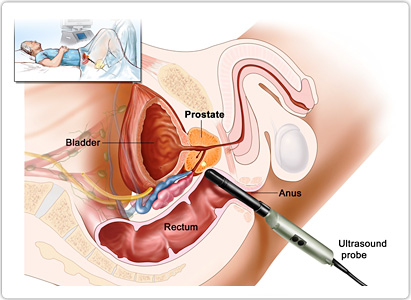As there is not much obvious symptom of early prostate cancer, many patients fail to have diagnosis timely. When they are admitted in hospital, they have missed the best chance of treatment. Get to know the diagnosis of prostate cancer and find out how prostate cancer can be detected.

Diagnostic Methods of Prostate Cancer
1. Prostate specific antigen determination: prostate specific antigen is a specific secretion of prostate. Its density can be determined through blood test. The prostate cancer patients' PSA value is comparatively higher than normal people.
2. Rectal touch: it can find out whether there are hard nodules in the surface of prostate, but can not detect early prostate cancer.
3. Biopsy: when detected with nodules and high value of PSA, one can have a biopsy, which is performed by inserting a puncture needle through rectum into the tumor under the guidance of B-ultrasound, to get a more accurate diagnosis.
4. B-ultrasound, CT and MRI: these examination methods are generally used among diagnosed prostate cancer patients to stage the cancer and check whether there is lymphatic metastasis in the surrounding of the prostate. To more accurately stage the cancer, CT or MRI must be done before biopsy, as changes of inner prostate after biopsy will cause inaccurate staging.
5. Body radioactive nuclide bone scan: it can detect early bone metastasis, which often happen among prostate cancer patients.
 viber
viber